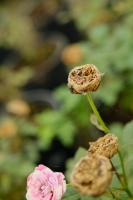Can You Plant Lavender Trees in Colorado?
Colorado is known for its beautiful scenery and diverse climate. However, the question many gardeners and homeowners ask is whether lavender trees can be grown in Colorado. The answer to this question is both yes and no. While lavender thrives well in warm and sunny climates, it can still be grown in Colorado with the right techniques and care. In this article, we’ll discuss the best ways to plant lavender trees in Colorado.
Choosing the Right Lavender Tree Variety
The first step to planting lavender trees in Colorado is selecting the right variety of lavender. Some lavender varieties are more suited to Colorado’s dry and arid climate than others. The recommended varieties to choose from include:
English lavender
French lavender
Spanish lavender
Fairy wings lavender
These varieties can be grown in Colorado, but it’s important to ensure that you are getting a variety that can tolerate Colorado’s climate. You can speak with your local garden center to get advice on which variety would be best for your location.
Planting Lavender Trees in Colorado
When it comes to planting lavender trees in Colorado, the key is to ensure that the soil is well-drained and infertile. Lavender trees thrive well in soils with low to medium fertility, and soils that drain quickly. In Colorado, the soil tends to be alkaline, which is often not suitable for lavender trees. You can amend the soil by adding organic matter such as well-aged manure, compost or sphagnum peat moss.
Lavender trees are best planted in the spring months, between March and May, or in the fall months, between September and October. These are the ideal times because the warm temperatures and the stability of the soil during these seasons favor the growth of the plant.
Care and Maintenance for Lavender Trees
Once your lavender trees are planted, they require minimal care. Lavender trees are drought-tolerant plants and require only moderate watering during the growing season, which is typically from late spring to early autumn. However, it’s important not to over-water the plants as this can lead to root rot. Ensure that the soil is well-drained and that water does not accumulate around the base of the plant.
You should also prune the lavender trees after they bloom, which is typically in early summer. Pruning helps to promote new growth and prevent the plants from becoming woody. You can also cut out any dead or damaged branches to improve the health of the plant. Make sure you don't prune too hard, as lavender is delicate and can easily be damaged.
In Conclusion
While growing lavender trees in Colorado can be challenging due to the state’s harsh climate, it is definitely possible with the right care and techniques. Make sure to choose the right variety of lavender, plant them during the ideal months, and give them the right care and maintenance. With these tips, you can successfully grow beautiful lavender trees in Colorado.

 how many times do yo...
how many times do yo... how many planted tre...
how many planted tre... how many pine trees ...
how many pine trees ... how many pecan trees...
how many pecan trees... how many plants comp...
how many plants comp... how many plants can ...
how many plants can ... how many plants and ...
how many plants and ... how many pepper plan...
how many pepper plan...































